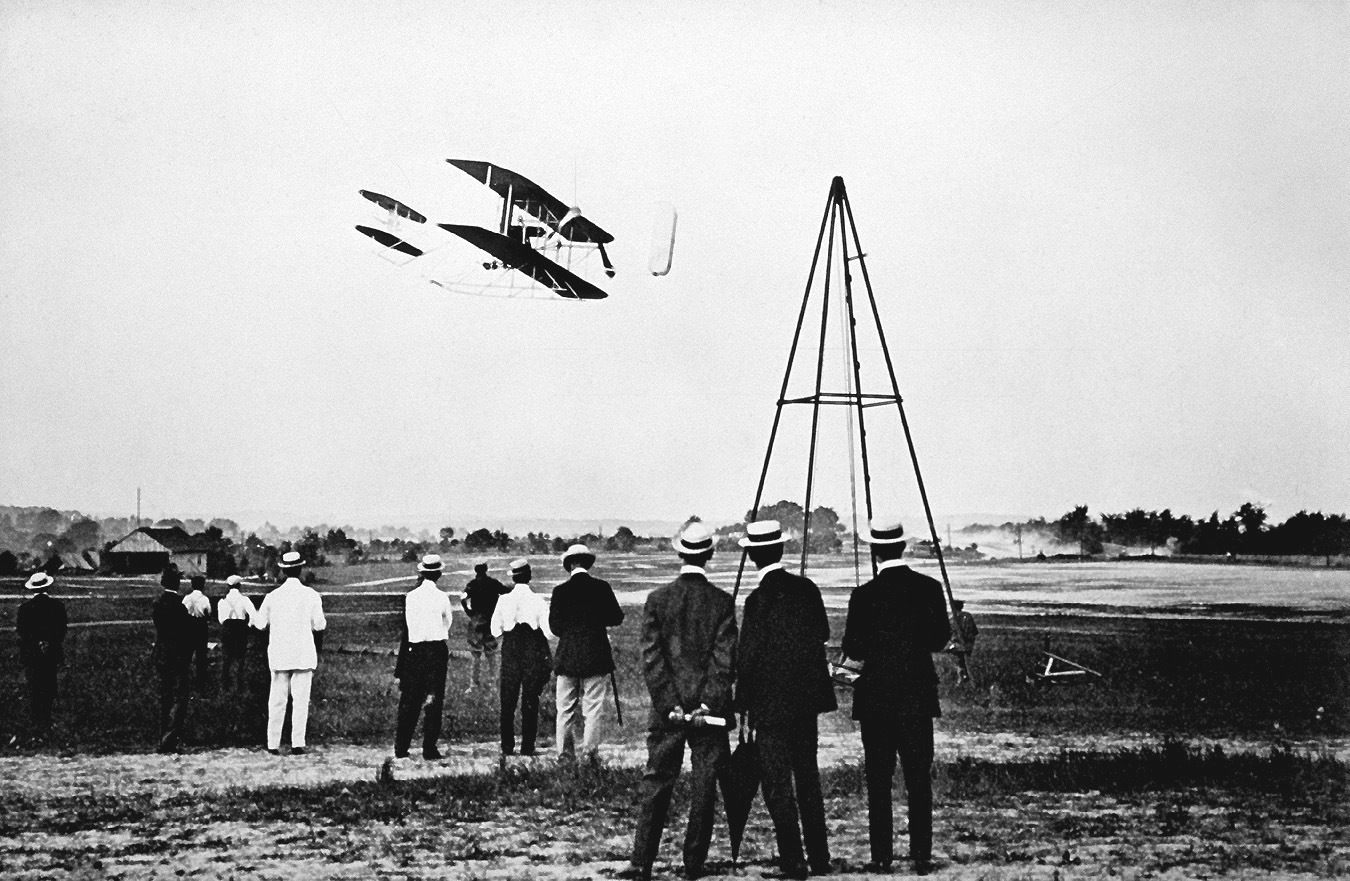
Wright Model A test flyer, Fort Myer, Virginia. National Archives
How to register:
We offer two field trip scheduling options:
- Select a field trip from the Museum’s public event schedule
- Request to schedule a field trip at a time that meets your group’s schedule
Audience:
All audiences. Content appropriate for Grades 6-12.
Goal: Recognize the how the U.S. Army has developed new technologies that have transformed American life.
Program Description:
On Dec. 17, 1903, Orville and Wilbur Wright flew their heavier-than-air machine, over a 100 feet in 12 seconds at Kitty Hawk, North Carolina. This flight, the first of three that day, marked the world’s first powered, sustained and controlled airplane flight. During those three short test flights, the aerial age was born.
The Army has frequently been a leader in recognizing and developing new technology and inventions to improve its effectiveness on the battlefield. Following the Wright Brothers success, the Army challenged the inventors to provide an aircraft that would carry two passengers, fly 40 miles per hour and remain airborne for an hour. The result, the Wright Model A, was tested and accepted by the Army in 1909 at Fort Myer, Virginia. The purchase constituted the Army’s first air force.
Discover how the Wright brothers countered the problems of control and balance through experimentation to achieve success. Discover how the U.S. Army harnessed this new technology to improve readiness and learn how in turn that technology impacted civilian life.
Objective: At the end of this lesson students, will be able to
- Describe how the development of aircraft has improved American life.
- Discuss how the U.S. Army has developed new technologies that have transformed American life.
Guiding Questions:
How have the U.S. Army impacted American society?
Curriculum Connections
Common Core Standards
- CCSS.ELA-LITERACY.RH.6-8.2
Determine the central ideas or information of a primary or secondary source; provide an accurate summary of the source distinct from prior knowledge or opinions.
History and Social Science Standards of Learning for Virginia Public Schools
-
United States History 1865 to Present
-
USII.3 The student will apply history and social science skills to understand how industrialization changed life in rural and urban America after the Civil War by
- B) explaining the impact of new inventions, the rise of big business, the growth of industry, and the changes to life on American farms in response to industrialization.
-
USII.9 The student will apply history and social science skills by
- A) studying the iterative and ongoing advancements in science and technology.
-
USII.3 The student will apply history and social science skills to understand how industrialization changed life in rural and urban America after the Civil War by
Your message has been submitted.
